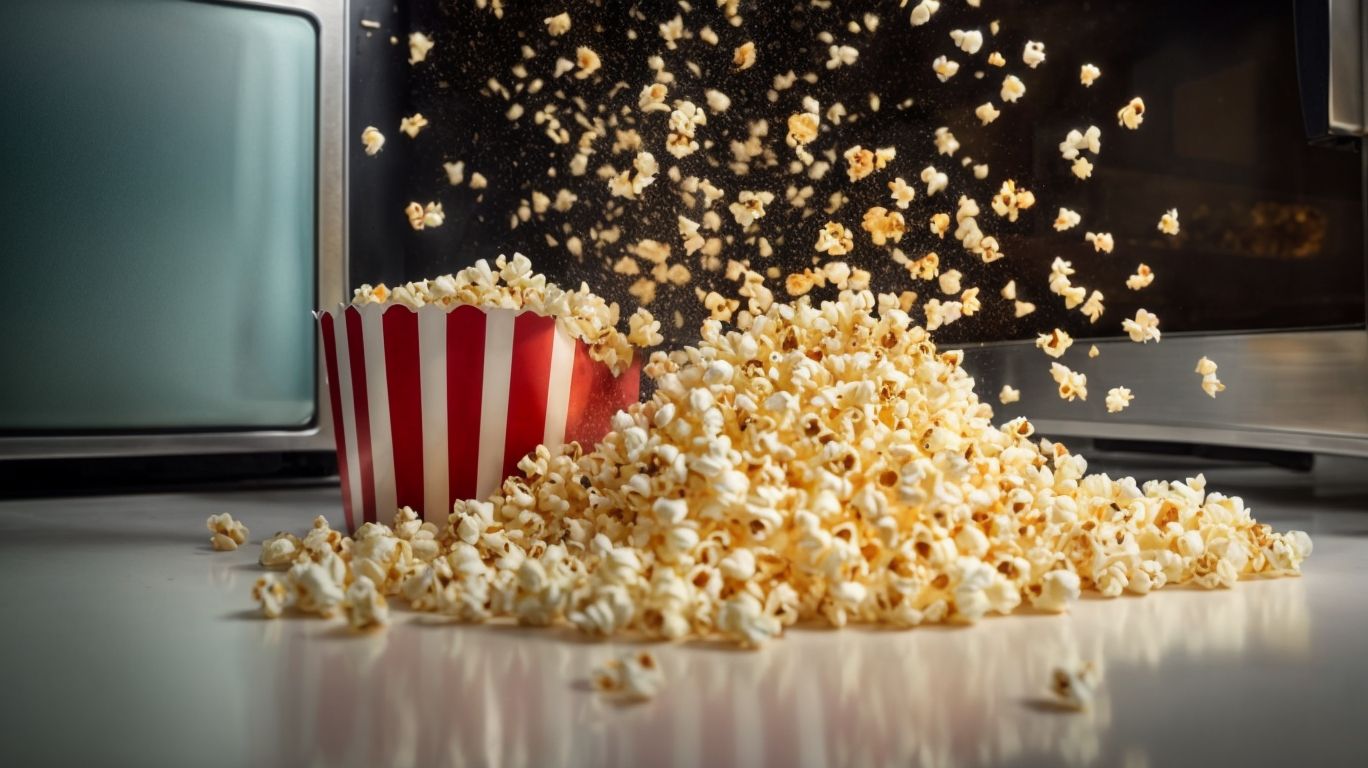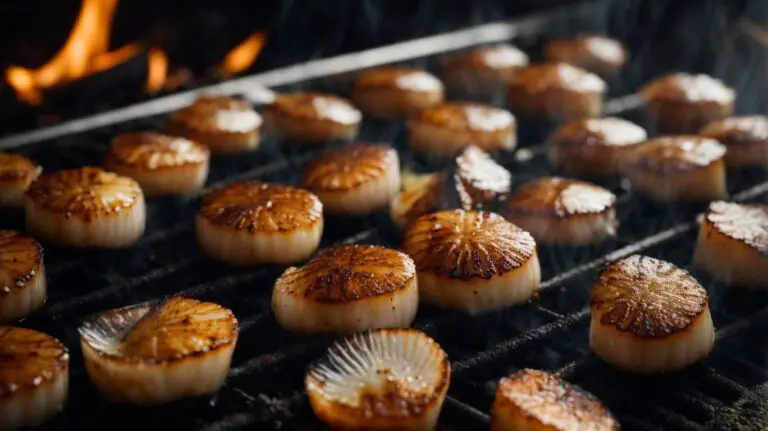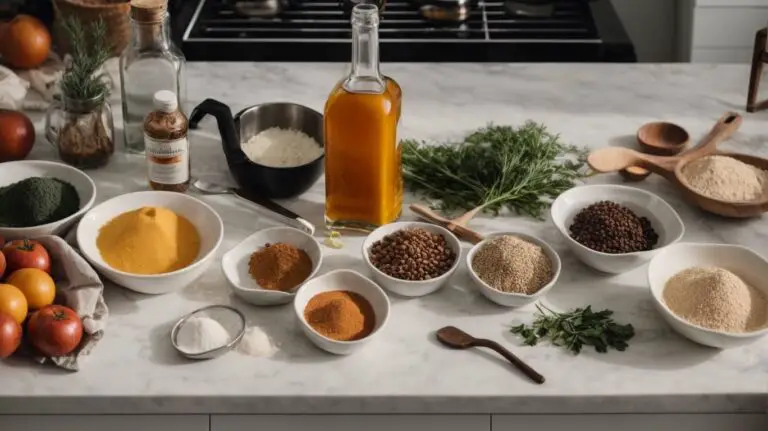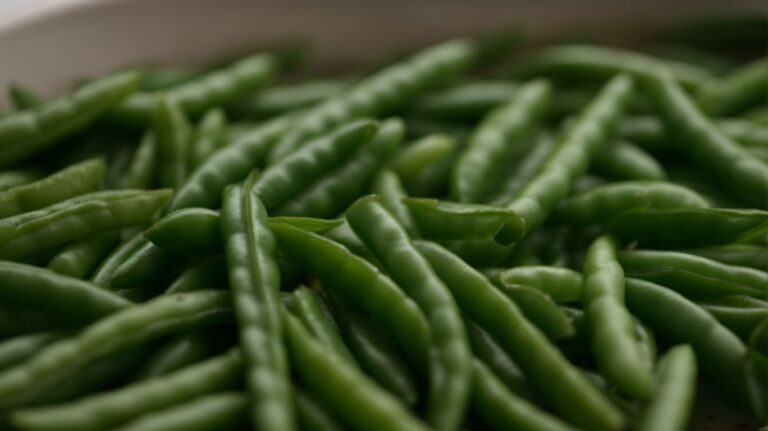How to Cook Microwave Popcorn Without a Microwave?
Love the taste of microwave popcorn but don’t have a microwave? Don’t worry, I’ve got you covered!
We will explore the world of microwave popcorn, how it works, and why you might want to cook it without a microwave.
I’ll walk you through different methods to cook microwave popcorn without a microwave, including stovetop, oven, air fryer, and even camping methods.
Plus, I’ll share the benefits and tips for making the perfect batch of homemade microwave popcorn.
Grab your popcorn kernels and let’s get popping!
Key Takeaways:
What is Microwave Popcorn?
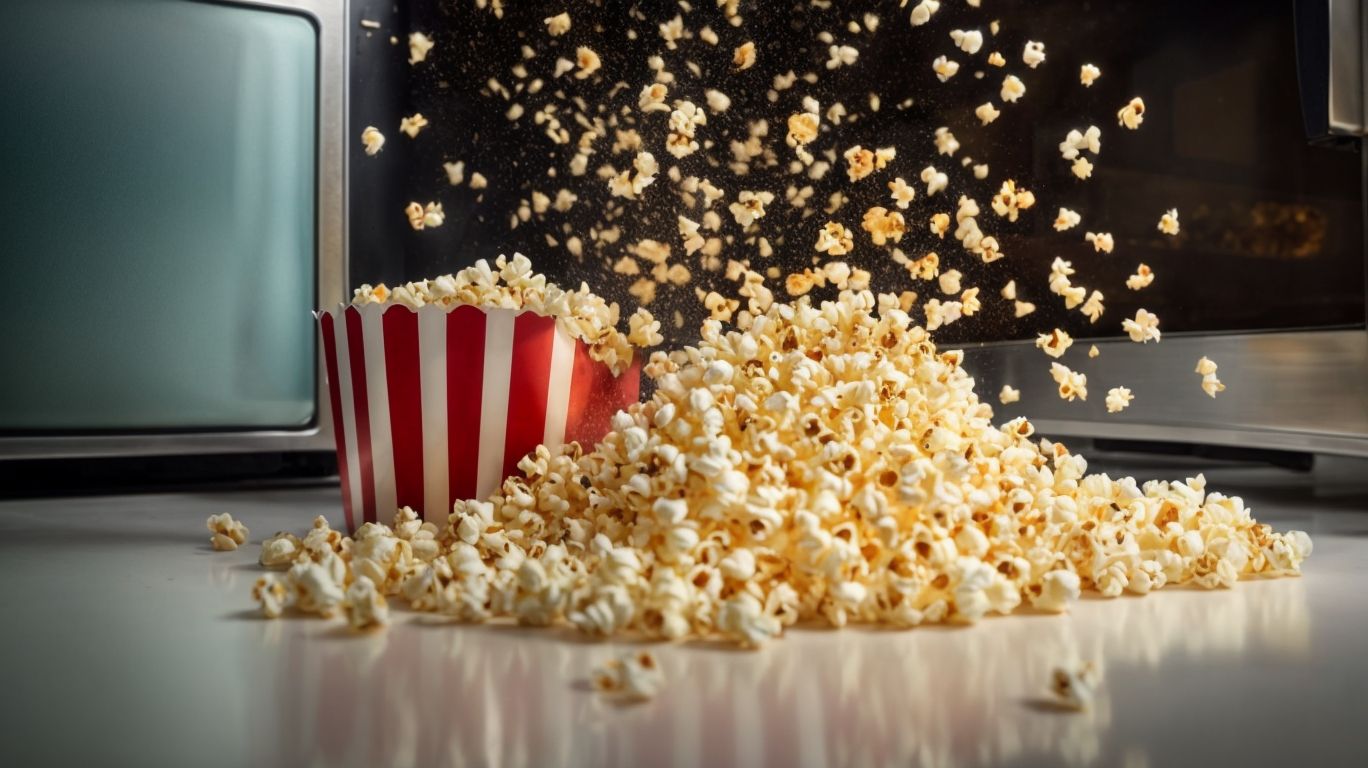
Credits: Poormet.Com – James Hall
Microwave popcorn refers to a convenient snack option that involves specialized bags containing pre-packaged popcorn kernels and flavorings designed to be cooked quickly in a microwave oven.
This modern-day snack revolutionized the way we enjoy popcorn, allowing for a hassle-free and mess-free preparation in a matter of minutes. The popcorn kernels in these specialized bags are treated with oil, salt, and seasonings to ensure a perfect flavor infusion with each pop.
To prepare microwave popcorn, one simply needs to place the bag in the microwave, set the timer, and listen for the delightful sound of kernels popping. It is not only a convenient treat for movie nights, but also a quick and easy snack option for any time of the day.
How Does a Microwave Popcorn Work?
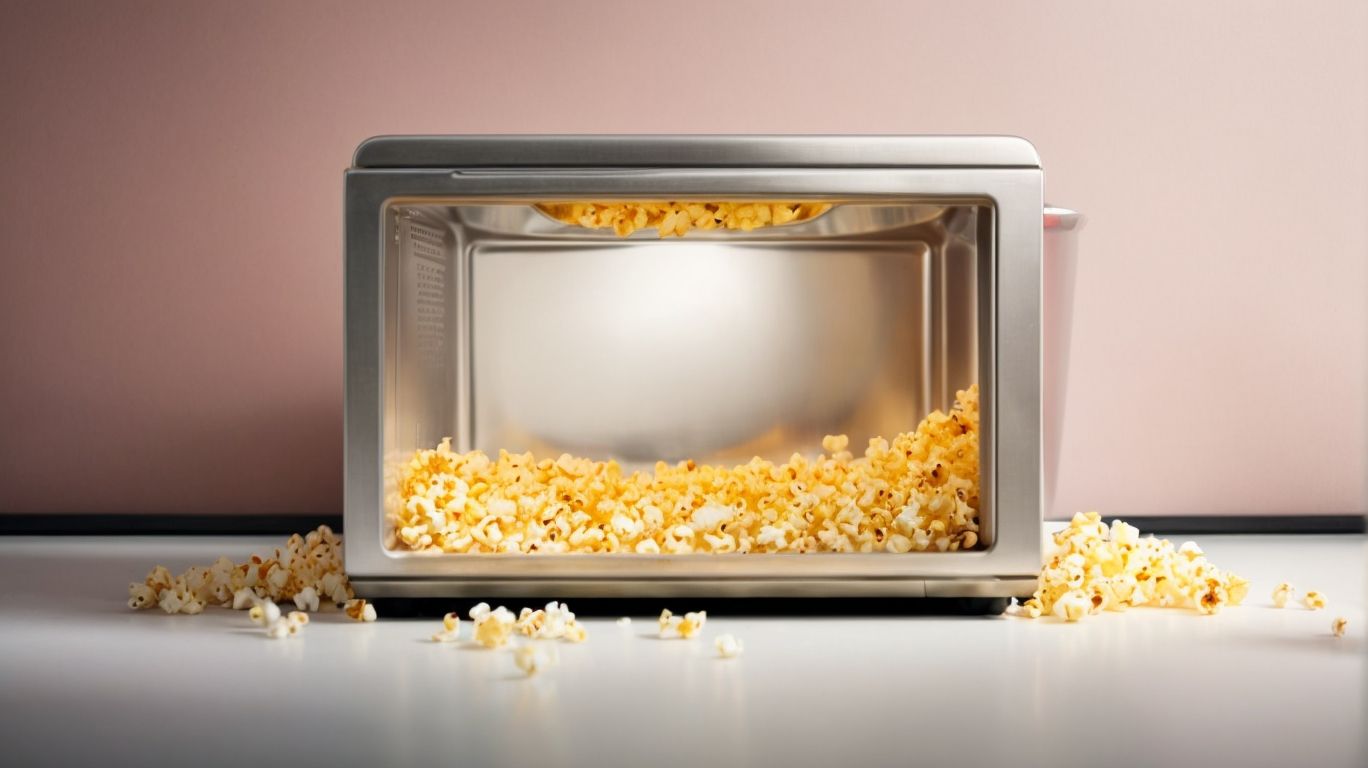
Credits: Poormet.Com – David Lopez
The process of microwave popcorn involves the rapid heating of popcorn kernels enclosed in a specially designed bag, utilizing the microwave’s energy to increase the internal temperature and pressure, leading to the kernels popping and expanding to form the familiar snack.
As the microwave radiation penetrates the bag, it directly heats the moisture inside the kernels. The heat causes the moisture to turn into steam, building up pressure until the kernel’s tough outer shell ruptures, allowing the starchy interior to rapidly expand.
The bag’s design plays a crucial role as well, ensuring the kernels are evenly distributed to promote uniform heating, resulting in fewer unpopped kernels and a more consistent snack. The bag material must be able to withstand the high temperatures and pressures involved during the popping process, preventing premature bursting and ensuring safe preparation.
Why Cook Microwave Popcorn Without a Microwave?
While microwave popcorn is a popular choice for quick snacks, cooking popcorn without a microwave offers a more traditional and hands-on approach, allowing for greater control over the cooking process and flavor customization.
Non-microwave methods like stovetop popping or air-popping give you the freedom to experiment with different oils, salts, seasonings, and even sugars to create a unique popcorn flavor that suits your taste buds perfectly. Unlike pre-packaged microwave popcorn, where the flavors are predetermined, using traditional methods allows you to adjust the ingredients based on your preferences.
When you cook popcorn without a microwave, you have full control over the cooking outcome. You can adjust the heat, stirring frequency, and cooking time to achieve the desired level of crispiness and flavor intensity, ensuring a satisfying popcorn experience every time.
What Are the Different Ways to Cook Microwave Popcorn Without a Microwave?
Various methods exist to prepare microwave popcorn without the use of a microwave, including stovetop cooking, oven baking, air fryer techniques, and even specialized camping methods, each offering a unique twist to the traditional snack preparation process.
When opting for the stovetop method, heat oil in a heavy-bottomed pan, add the popcorn kernels, cover with a lid, and shake the pan occasionally until the pops slow down.
The oven technique involves spreading popcorn kernels on a baking sheet, baking them until they pop, and seasoning them to taste.
On the other hand, the air fryer approach requires placing the kernels in a single layer in the air fryer basket, setting it to the appropriate temperature, and shaking halfway through for even popping. These alternative methods cater to diverse preferences and provide a fun twist to the classic popcorn experience.
Stovetop Method
The stovetop method for cooking popcorn involves using a pot or pan on a stovetop burner to heat popcorn kernels with oil or butter-like substances, requiring constant shaking and monitoring to ensure even popping and prevent burning.
When selecting a pot for stovetop popcorn, it’s best to choose one with a thick bottom to prevent kernels from burning. To start the process, add a small amount of oil or butter to the pot along with the kernels.
- Place the pot on the stovetop over medium-high heat, ensuring the lid is on securely to keep the popcorn contained.
- As the kernels heat up, shake the pot gently but consistently to prevent any sticking or burning.
Remember, safety is essential when cooking with hot oil. Always use oven mitts to handle the pot and keep a close eye on the popping process to avoid any accidents.
Oven Method
The oven method for preparing popcorn involves spreading popcorn kernels on a baking sheet, covering them with a lid or foil, and baking them at a specific temperature until they pop, resulting in a crunchy and flavorful snack.
Before you begin, preheat your oven to around 400°F to ensure it’s nice and hot, ready to pop those kernels to perfection. Ensure the baking sheet is large enough to provide ample space for the kernels to spread out evenly. This way, each kernel has room to pop without overcrowding. Remember to cover the baking sheet with a lid to trap the heat and steam, encouraging the kernels to pop uniformly.
For added flavor, you can drizzle some melted butter and sprinkle seasonings like salt, pepper, or even a dash of paprika over the kernels before covering them. The heat of the oven will help the seasonings adhere to the popped corn, enhancing the taste. Once the popping sounds start to slow down, remove the baking sheet from the oven and let it cool slightly before enjoying your homemade, oven-baked popcorn delight.
Air Fryer Method
Utilizing an air fryer to make popcorn involves using specialized Jiffy Pop containers or creating foil packets, placing them in the air fryer basket, covering with a lid, and periodically shaking to ensure even popping and flavor distribution.
When opting for Jiffy Pop containers, simply place the pre-packaged unit into the air fryer, ensuring the lid is securely in place to trap the heat. If you choose to craft your packets using foil, ensure they are tightly sealed to avoid any kernels escaping during the popping process.
Cooking duration typically ranges from 7 to 10 minutes, depending on the air fryer’s temperature settings. It’s crucial to shake the basket every couple of minutes, promoting consistent heat distribution and preventing any burning.
For the perfect movie-night snack, experiment with various seasonings like salt, butter, or even nutritional yeast to elevate the flavor profile of your popcorn. The versatility of an air fryer allows you to customize each batch to suit your taste buds.
Camping Method
For campers and outdoor enthusiasts, making popcorn over a campfire involves using a covered pot or pan placed over the heat source, ensuring the lid stays secure to trap steam and facilitate the popping process, resulting in a delightful snack for outdoor adventures.
When selecting the equipment for this unique camping culinary experience, opt for a sturdy pot with a well-fitting lid to prevent any kernels from escaping during cooking. It’s essential to control the heat under the pot to avoid burning the popcorn—a gentle flame or hot coals are ideal for evenly popping the kernels.
Ensuring the lid security is vital as it not only aids the popping process but also prevents any potential accidents. The lid acts as a seal, allowing the steam to circulate inside the pot and transform the kernels into fluffy delights.
Outdoor cooking considerations, such as wind direction and fire safety, play a significant role in the popcorn-making process. Positioning the pot away from strong winds ensures a consistent heat source, while practicing basic fire safety measures is crucial for an enjoyable camping experience.
What Are the Benefits of Cooking Microwave Popcorn Without a Microwave?

Credits: Poormet.Com – Jeremy Davis
Cooking microwave popcorn without a microwave offers several advantages, including a healthier snack option, greater control over ingredient choices, and potential cost savings compared to pre-packaged varieties.
Making popcorn without a microwave allows you to bypass the concerns associated with harmful chemicals released from microwave popcorn bags. By using a simple stovetop method or an air popper, you can avoid additives like artificial flavors, trans fats, and excess sodium commonly found in microwave popcorn products. This customization not only boosts the health benefits of popcorn but also lets you experiment with diverse flavorings such as nutritional yeast, herbs, spices, or even a drizzle of coconut oil for a unique taste.
Healthier Option
Opting for non-microwave popcorn methods can result in a healthier snack choice, allowing individuals to control the type and amount of ingredients used, reducing the reliance on processed additives and excessive salt or fats.
When making homemade popcorn, individuals have the freedom to choose high-quality ingredients, such as organic popcorn kernels, to ensure a wholesome snacking option. By utilizing natural flavor enhancements like herbs, spices, or nutritional yeast, the taste can be customized to personal preferences without the artificial flavors found in commercial products. This DIY approach not only offers a healthier alternative but also supports sustainability by reducing packaging waste and promoting a more eco-friendly snacking option overall. The simplicity and versatility of homemade popcorn provide a satisfying and nutritious treat for all occasions.
More Control Over Ingredients
Preparing popcorn without a microwave grants individuals precise control over the ingredients and flavorings, enabling custom seasoning blends, healthier alternatives to store-bought varieties, and catering to specific dietary preferences or restrictions.
By having control over the ingredients, individuals can easily adjust the salt levels to their liking, experiment with various herbs and spices to create unique flavors, and opt for organic or low-fat ingredients to enhance the nutritional value. This level of ingredient control is especially beneficial for those with food allergies or intolerances, as they can carefully select each component to ensure a safe and enjoyable snacking experience.
Exploring different popping methods like air-popping or stovetop popping offers versatility in preparation and taste, allowing popcorn enthusiasts to continuously innovate in their snack creations.
Saves Money
Opting for homemade popcorn preparations without a microwave can lead to cost savings, as bulk purchases of kernels and seasonings are often more economical than purchasing pre-packaged microwave popcorn options.
When you make popcorn at home, you have the freedom to control the quality of ingredients and adjust the flavors to suit your preferences. By buying kernels in bulk, you can significantly cut down on the cost per serving, making it a budget-friendly snack choice for movie nights or casual gatherings. The financial benefits of homemade popcorn extend beyond immediate savings, as this sustainable practice reduces the overall expenses on store-bought snacks in the long run.
What Are the Tips for Cooking Microwave Popcorn Without a Microwave?

Credits: Poormet.Com – Scott Roberts
Enhance your non-microwave popcorn cooking experience with these essential tips: use high-quality popcorn kernels, add flavorings post-popping, utilize large pots or pans, shake constantly, and employ a timer for perfect results.
When selecting your popcorn kernels, opt for fresh ones that are known for producing fluffy, tender popcorn. For adding flavors, consider sprinkling your favorite seasonings immediately after the popcorn finishes popping to enhance the taste. Using a spacious pot or pan ensures even heat distribution and optimal popping. Remember to shake the pot regularly to prevent burning and ensure even popping. Watch the time to prevent under or overcooking the popcorn for that ideal crunchiness.
Use High-Quality Popcorn Kernels
Selecting high-quality popcorn kernels is essential for achieving optimal taste and texture in your homemade popcorn, ensuring a flavorful and satisfying snacking experience.
Regarding popcorn, the type of kernels you use truly makes a difference. Premium popcorn kernels are carefully selected for their superior flavor profile, which translates into a more delicious snack. These high-quality kernels are known for their ability to pop evenly and produce fluffy, tender popcorn with just the right amount of crunch. By investing in top-notch ingredients, you can elevate your popcorn game and impress your guests with a delectable treat that is sure to be a hit at movie nights or gatherings.
Add Flavorings After Popping
For enhanced flavor profiles, consider adding seasonings and flavorings to your popcorn after it has finished popping, allowing the ingredients to adhere better to the freshly cooked kernels and intensify the taste experience.
Once your popcorn has finished popping, transfer it to a large mixing bowl for seasoning. Regarding flavorings, the options are endless – from classic butter and salt to more adventurous choices like sriracha lime or garlic parmesan.
To ensure an even distribution of the flavors, try gently tossing the popcorn with the seasonings using a silicone spatula or shaking them together in a sealed plastic bag. Don’t forget to add a pinch of seasoning at a time, tasting as you go to achieve the perfect balance of flavors. Enjoy the art of seasoning your popcorn to create a delectable snack that will keep everyone coming back for more!
Use a Large Pot or Pan
Opt for a spacious pot or pan when cooking popcorn on the stovetop to allow ample room for kernel expansion and even heating, ensuring a uniform popping process and preventing overcrowding that can lead to unevenly cooked popcorn.
Regarding making popcorn on the stovetop, size matters. Choosing a larger vessel such as a pot or a wide pan not only provides adequate space for the kernels to pop freely but also promotes better heat distribution across the surface.
With a roomy cooking vessel, you can prevent overcrowding, which is crucial for ensuring each kernel receives the necessary amount of heat to pop uniformly. This results in a batch of perfectly popped popcorn without any burnt or undercooked pieces.
Shake the Pot or Pan Constantly
Maintain a continuous shaking motion while cooking popcorn on the stovetop to prevent kernels from burning, promote even popping, and distribute heat uniformly, resulting in perfectly popped and flavorful popcorn.
Consistent shaking of the pot or pan is crucial when making stovetop popcorn as it helps prevent any kernels from getting scorched by ensuring they’re constantly moving and exposed to the heat equally. This practice not only promotes optimal popping but also guarantees that the flavor is evenly distributed across all the popped kernels. The act of shaking also helps in maintaining uniform heat distribution throughout the cooking process, resulting in a batch of deliciously consistent and aromatic popcorn.
Use a Timer
Employing a timer during popcorn preparation serves as an instructive tool to monitor cooking durations, prevent overcooking or burning, and achieve the perfect balance between popped kernels and flavor development in your snack.
When using a timer, it is crucial to consider the type of popcorn being cooked. For instance, microwave popcorn may require a shorter cooking time compared to stovetop popcorn. Timing is key, as leaving the popcorn too long can result in a charred taste, while removing it too early may leave you with uncooked kernels.
Visual cues play a significant role in determining the ideal doneness of popcorn. Keep an eye out for the rapid popping slowing down or listen for longer intervals between pops as indicators that the popcorn is nearing readiness.
Conclusion: Enjoy Your Homemade Microwave Popcorn
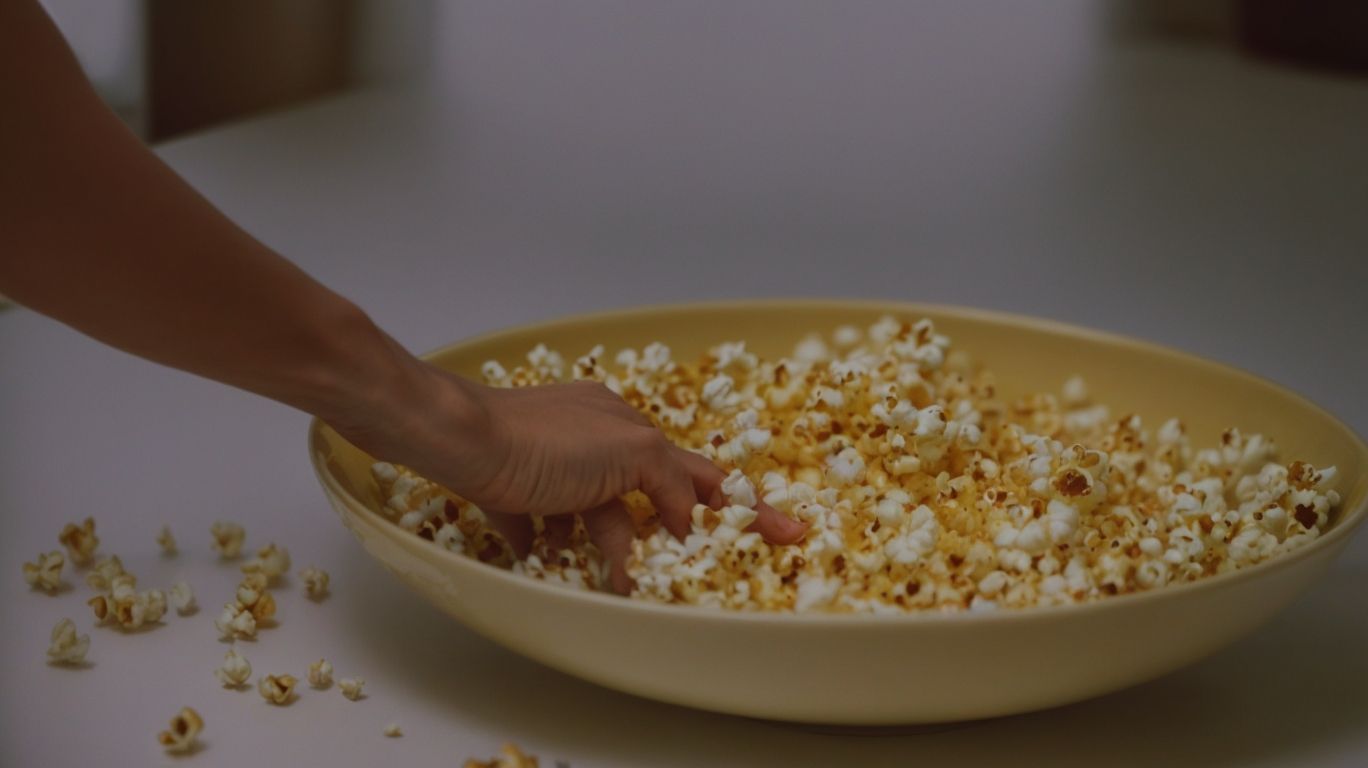
Credits: Poormet.Com – Jerry Perez
Embrace the flavorful experience of homemade microwave popcorn crafted with care and creativity, savoring the delightful snack that combines taste, tradition, and personal touch in every bite.
Homemade microwave popcorn is not just a convenient snack but also a delightful way to bring the magic of movie nights right into your home. With endless flavor possibilities and the satisfaction of customization, each batch is a treat waiting to be devoured by enthusiasts of all ages. So, why not gather your loved ones, pop a bowl of this delectable popcorn, and enjoy the blissful moments shared over this simple yet indulgent treat?
Frequently Asked Questions
Can I cook microwave popcorn without a microwave?
Yes, it is possible to cook microwave popcorn without a microwave. There are alternative methods you can use to achieve the same delicious results.
What kind of container or appliance can I use to cook microwave popcorn without a microwave?
You can use a stovetop popcorn popper, a Dutch oven, or a paper bag to cook microwave popcorn without a microwave. Each method provides a slightly different result, so choose the one that works best for you.
Can I use regular popcorn kernels to cook microwave popcorn without a microwave?
Yes, you can use regular popcorn kernels to cook microwave popcorn without a microwave. Just make sure to follow the instructions for the specific method you are using, as the cooking time and technique may differ from traditional microwave popcorn.
How do I cook microwave popcorn without a microwave using a stovetop popcorn popper?
To cook microwave popcorn without a microwave using a stovetop popcorn popper, heat the oil in the popper, add the popcorn kernels, and place it on the stove. Shake the popper occasionally to ensure even popping, and remove it from the heat when the popping slows down.
What is the best oil to use when cooking microwave popcorn without a microwave?
The best oil to use when cooking microwave popcorn without a microwave is one with a high smoke point, such as canola oil, coconut oil, or peanut oil. These oils can withstand high heat without burning and give the popcorn a delicious flavor.
How can I add flavor to my microwave popcorn when cooking it without a microwave?
There are many ways to add flavor to your microwave popcorn when cooking it without a microwave. You can use flavored oils, spices, or even cheese or chocolate for a sweet and savory treat. Experiment with different ingredients to find your favorite flavor combination.

